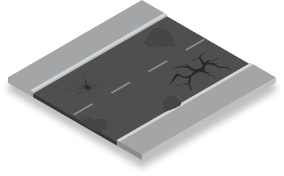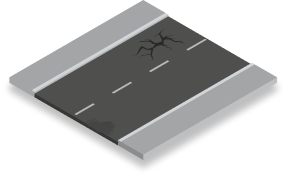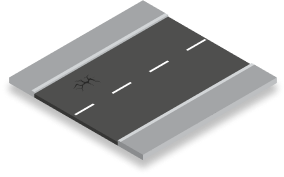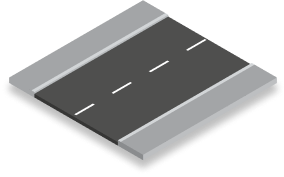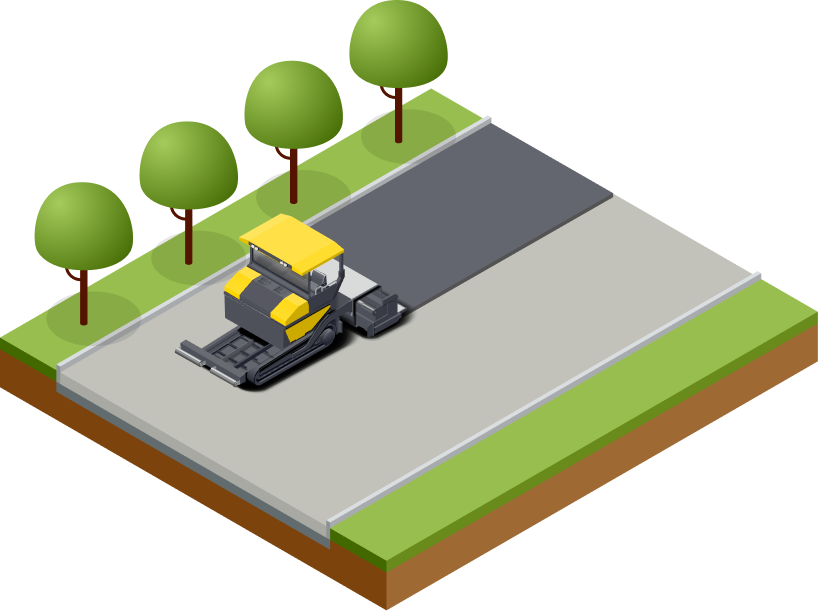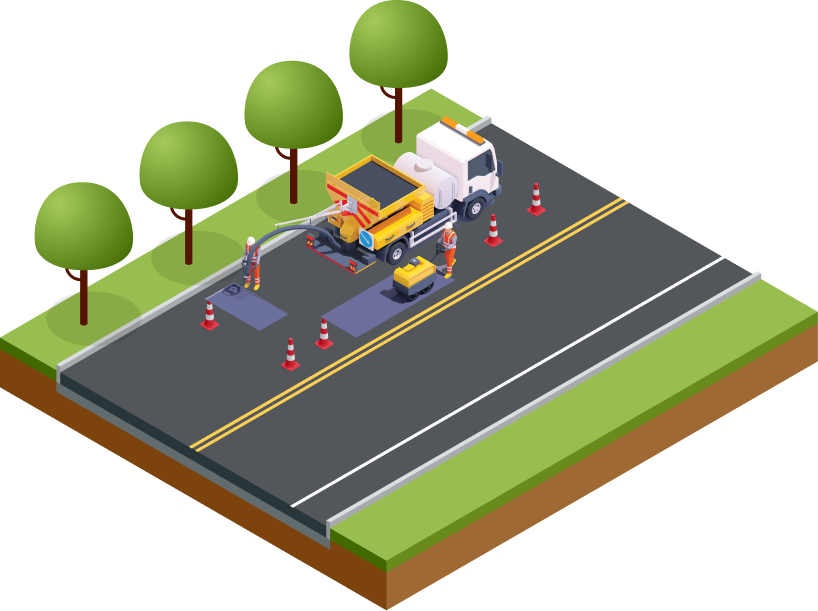At the Beginning
The new road starts out with excellent surface condition.
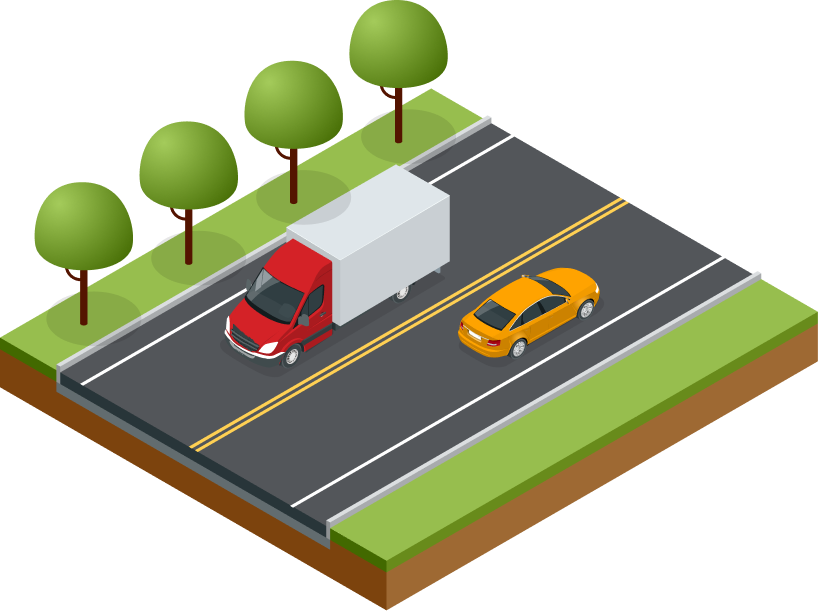
 Very Good
Very Good
Initial life cycle cost: 470000
Reactive Fixes
We hold off making any fixes until year 13. However, almost every year for the next seven years we need to make small, reactive fixes like patching potholes.
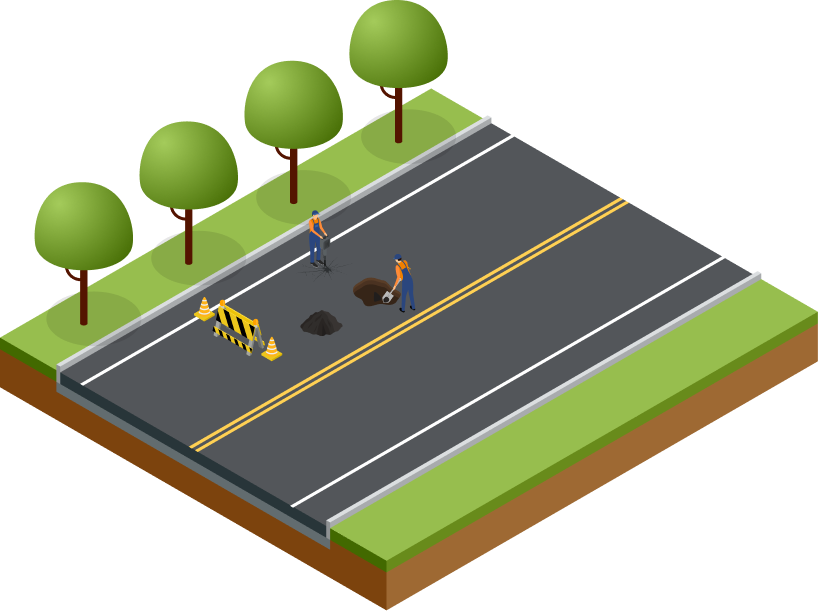
 Good
Good
Cost of individual fix: 1500
Reactive Fixes
We hold off making any fixes until year 13. However, almost every year for the next seven years we need to make small, reactive fixes like patching potholes.
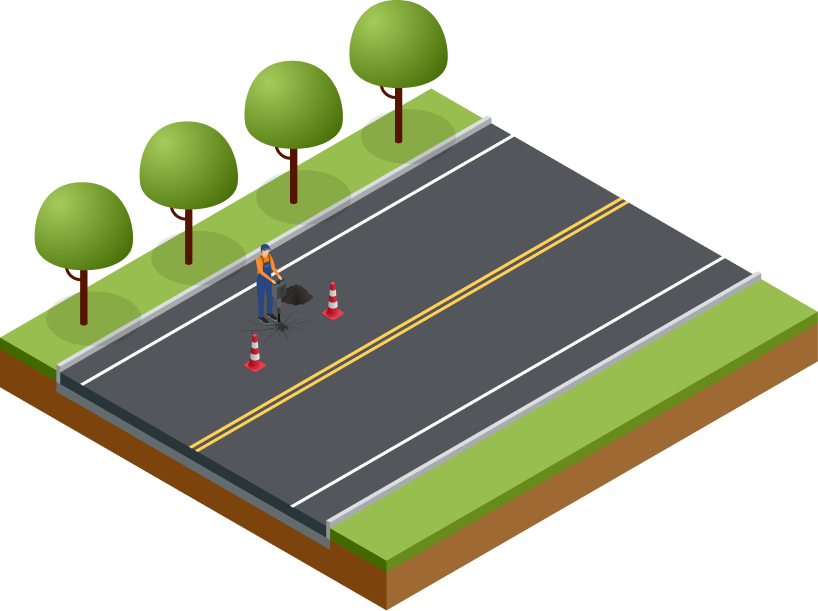
 Good
Good
Cost of individual fix: 1500
Reactive Fixes
We hold off making any fixes until year 13. However, almost every year for the next seven years we need to make small, reactive fixes like patching potholes.

 Fair
Fair
Cost of individual fix: 1500
Reactive Fixes
We hold off making any fixes until year 13. However, almost every year for the next seven years we need to make small, reactive fixes like patching potholes.
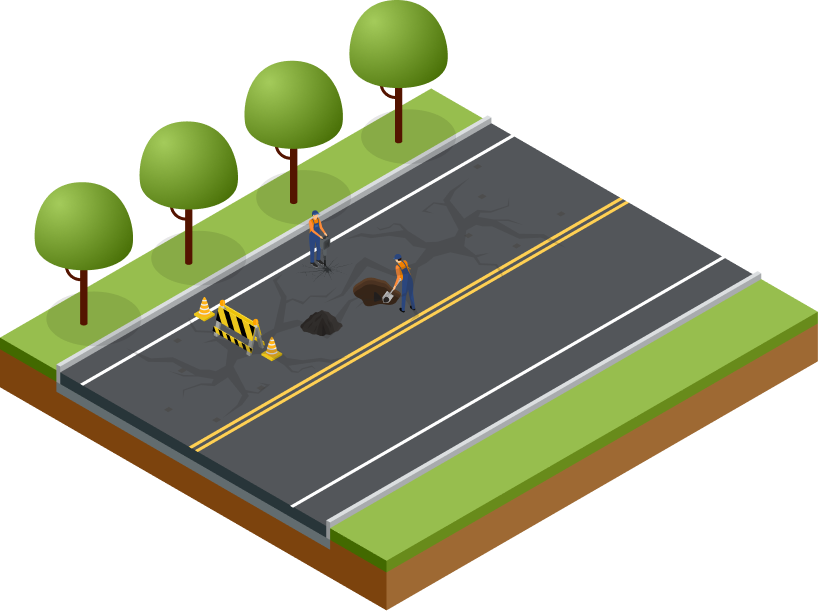
 Fair
Fair
Cost of individual fix: 1500
Reactive Fixes
We hold off making any fixes until year 13. However, almost every year for the next seven years we need to make small, reactive fixes like patching potholes.
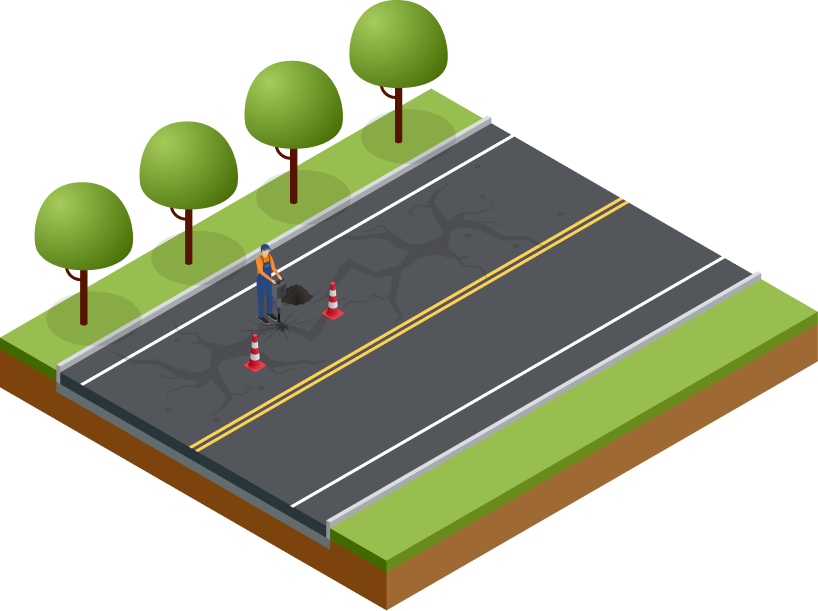
 Fair
Fair
Cost of individual fix: 1500
Reactive Fixes
At year 19, we continue to make small, reactive fixes for one more year but the roadway condition worsens.

 Fair
Fair
Cost of individual fix: 2000
Bigger Repair
At year 20, the roadway surface drops to poor condition and a bigger repair like resurfacing the road is needed to make the condition good again.
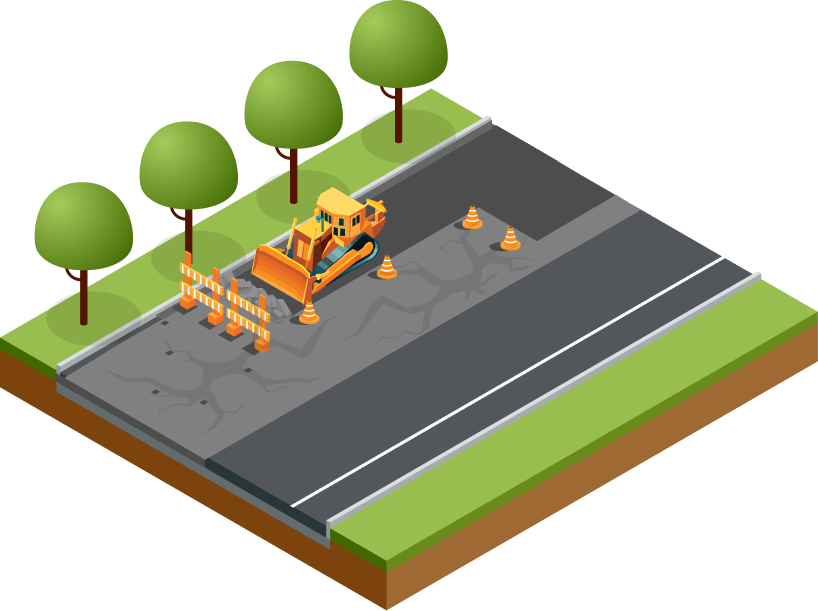
 Poor
Poor
Cost of individual fix: 185000
Reactive Fixes
After the bigger repair at year 20, we hold off making any fixes for another 13 years. However, almost every year for the next seven years we need to make small, reactive fixes like patching potholes.

 Good
Good
Cost of individual fix: 1000
Reactive Fixes
After the bigger repair at year 20, we hold off making any fixes for another 13 years. However, almost every year for the next seven years we need to make small, reactive fixes like patching potholes.

 Fair
Fair
Cost of individual fix: 1000
Reactive Fixes
After the bigger repair at year 20, we hold off making any fixes for another 13 years. However, almost every year for the next seven years we need to make small, reactive fixes like patching potholes.

 Fair
Fair
Cost of individual fix: 1000
Reactive Fixes
After the bigger repair at year 20, we hold off making any fixes for another 13 years. However, almost every year for the next seven years we need to make small, reactive fixes like patching potholes.

 Fair
Fair
Cost of individual fix: 1000
Reactive Fixes
At years 38 and 39, we continue to make small, reactive fixes but the roadway condition worsens again.

 Fair
Fair
Cost of individual fix: 1500
Reactive Fixes
At years 38 and 39, we continue to make small, reactive fixes but the roadway condition worsens again.

 Fair
Fair
Cost of individual fix: 1500
Bigger Repair
At year 40, the roadway surface drops to poor condition and another bigger repair like resurfacing the road is needed to make the condition good again.

 Poor
Poor
Cost of individual fix: 145000
Reactive Fixes
After the bigger repair at year 40, we hold off making any fixes for another 13 years. However, almost every year for the next seven years we need to make small, reactive fixes like patching potholes.

 Good
Good
Cost of individual fix: 750
Reactive Fixes
After the bigger repair at year 40, we hold off making any fixes for another 13 years. However, almost every year for the next seven years we need to make small, reactive fixes like patching potholes.

 Fair
Fair
Cost of individual fix: 750
Reactive Fixes
After the bigger repair at year 40, we hold off making any fixes for another 13 years. However, almost every year for the next seven years we need to make small, reactive fixes like patching potholes.

 Fair
Fair
Cost of individual fix: 750
Reactive Fixes
After the bigger repair at year 40, we hold off making any fixes for another 13 years. However, almost every year for the next seven years we need to make small, reactive fixes like patching potholes.

 Fair
Fair
Cost of individual fix: 750
Reactive Fixes
At years 58 and 59, we continue to make small, reactive fixes but the roadway condition worsens again.

 Fair
Fair
Cost of individual fix: 1000
Reactive Fixes
At years 58 and 59, we continue to make small, reactive fixes but the roadway condition worsens again.

 Fair
Fair
Cost of individual fix: 1000
Bigger Repair
At year 60, the roadway surface drops to poor condition and another bigger repair like resurfacing the road is needed to make the condition good again.

 Poor
Poor
Cost of individual fix: 110000
In the End
Because of the bigger fix we made at year 60, the road still has some life left in it at the end of our 70 year analysis. This amount is subtracted from all the costs to give us our total life cycle cost.
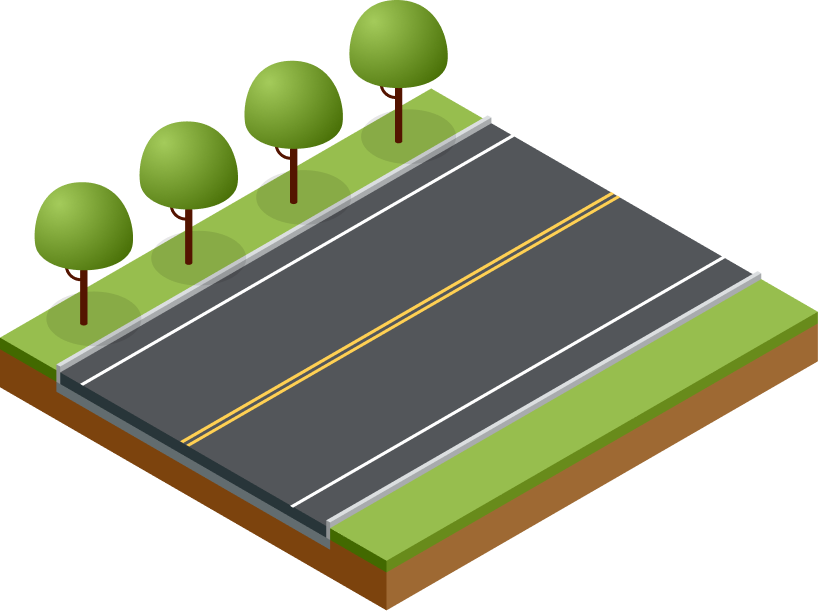
 Good
Good
Summary
Because of the bigger fix we made at year 60, the road still has some life left in it at the end of our 70 year analysis. This amount is subtracted from all the costs to give us our total life cycle cost.

Final Road Condition:
 Good
Good
Remaining value at 70 years: -50000

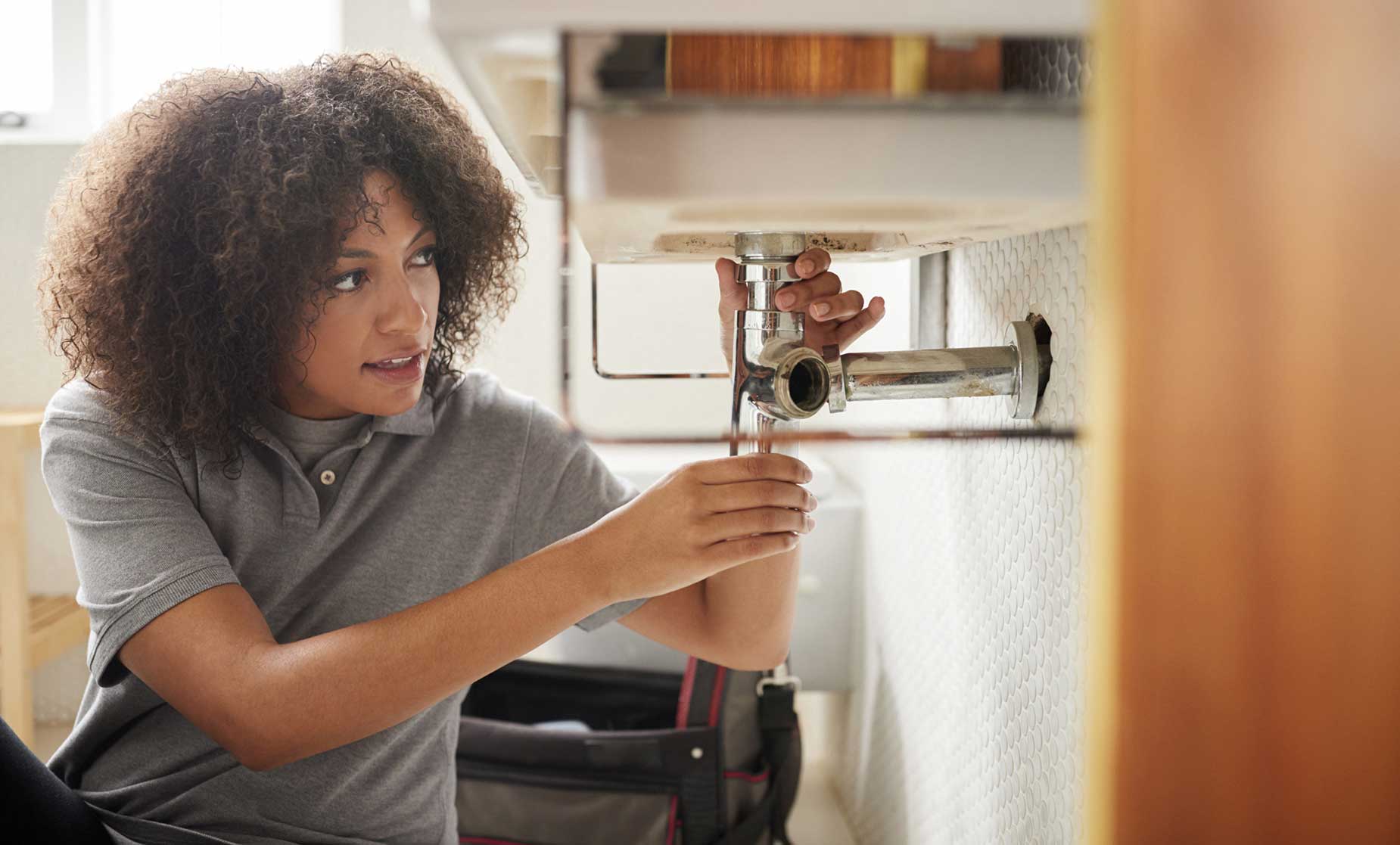
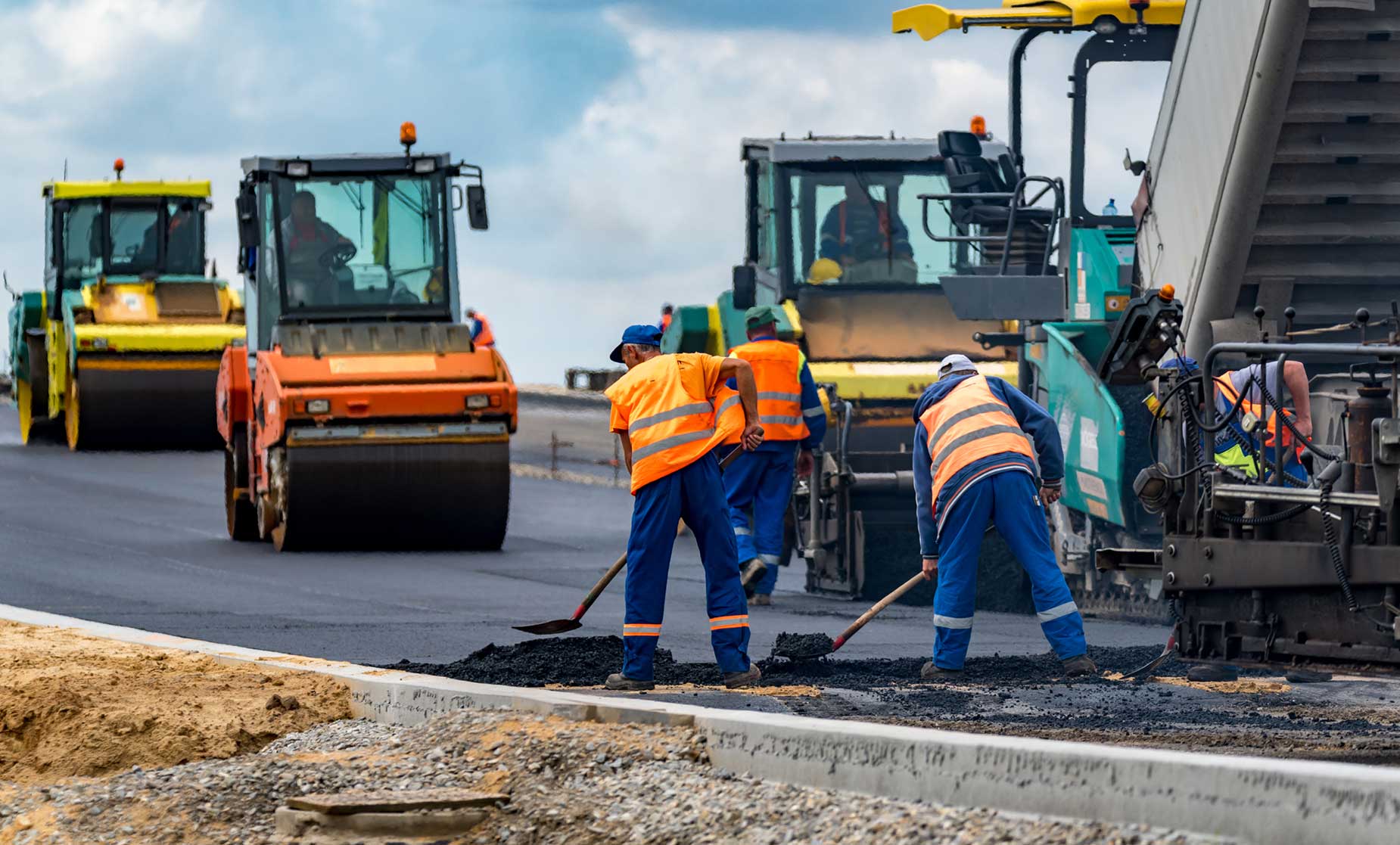

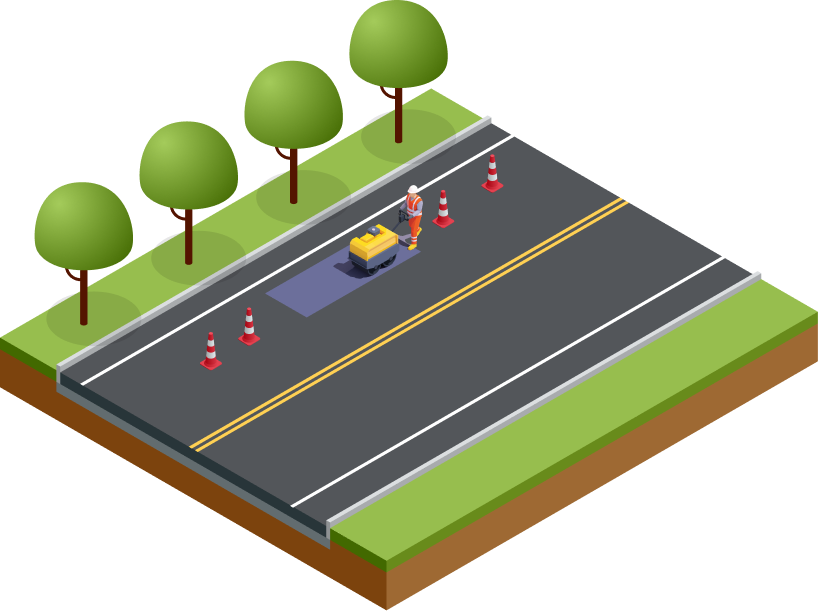
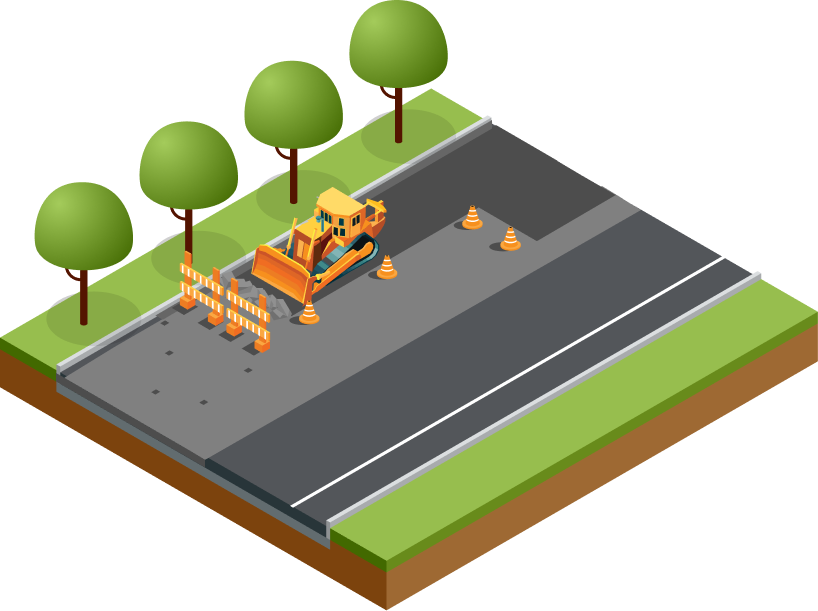

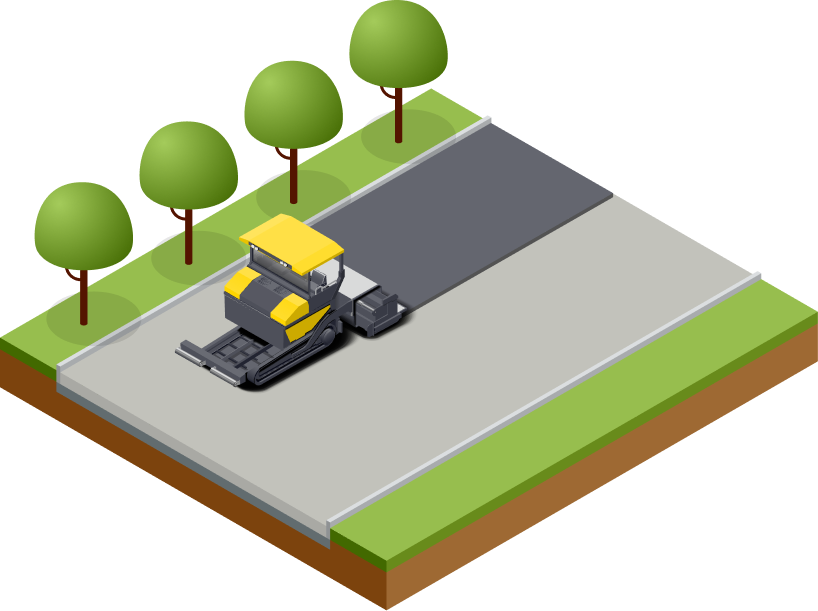


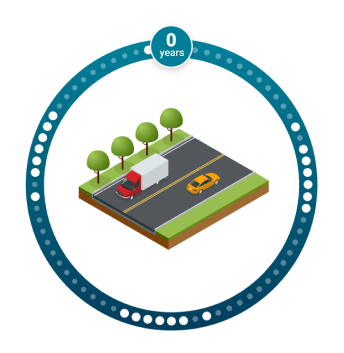
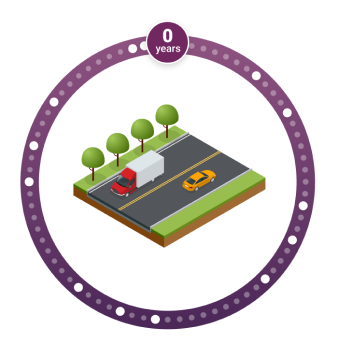
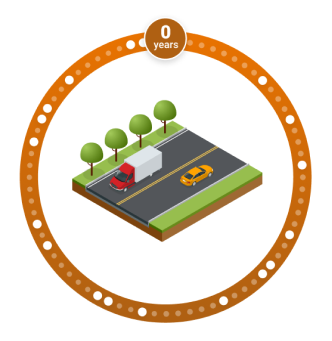
 Very Good
Very Good
 Good
Good
 Fair
Fair



 Poor
Poor
 Select this approach
Select this approach
